Learn how to pickle chili peppers straight from the garden. It is very easy to do, and the peppers will last several weeks or months. It's a great way to preserve your chili peppers.
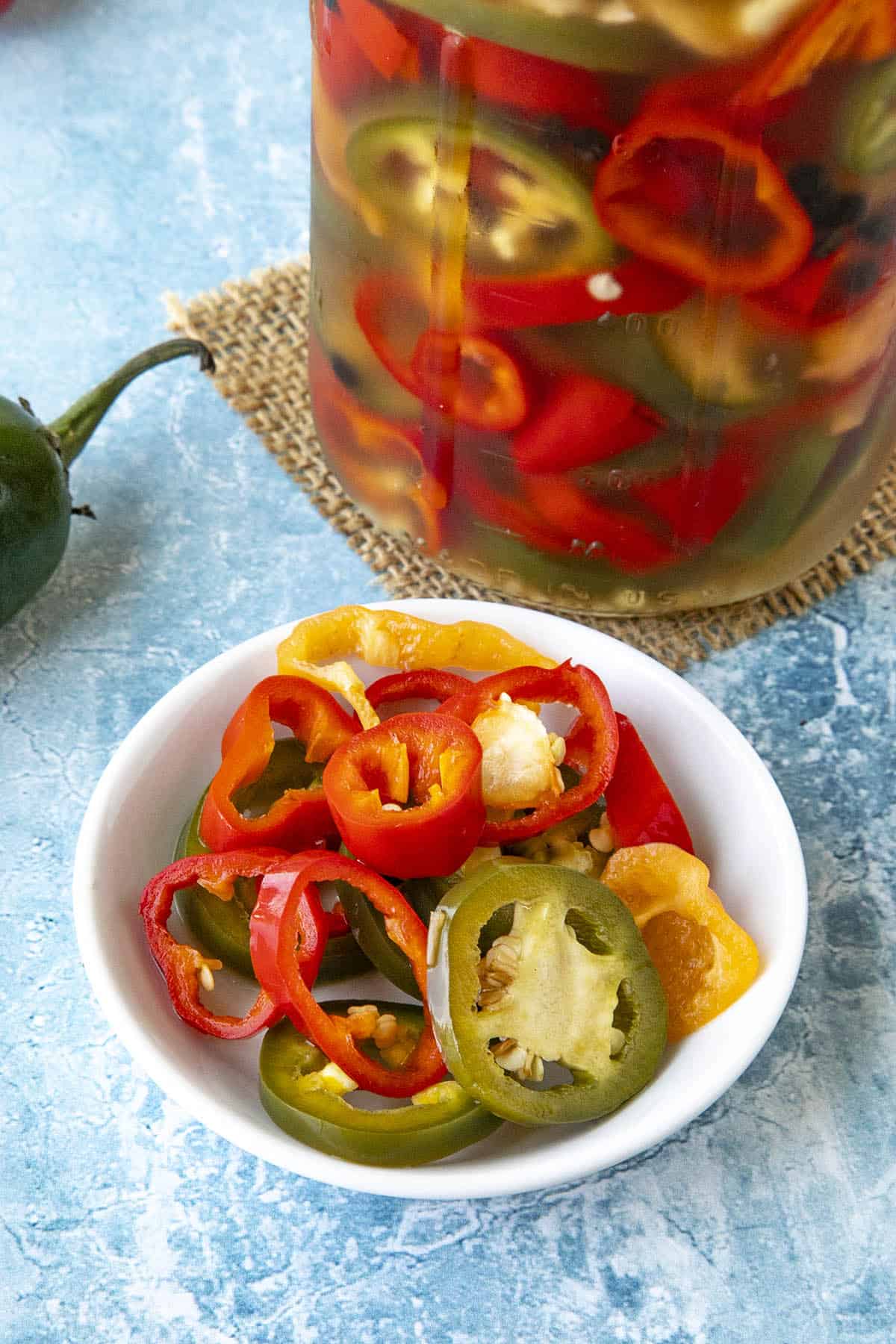
How to Pickle Chili Peppers - A Guide
I’ve been asked many times about how to pickle chili peppers. It is actually a rather simple process and one of my favorite ways to preserve chili peppers.
While there are a number of recipes you can use, this is one of my favorites for its ease of execution, and also for the resulting flavor.
You’ll want the chili pepper flavor to shine, but you’re also free to experiment with additional flavorings that will compliment your pickling recipe.
With pickling, there’s no need for a lot of fancy equipment, though, obviously, pickling peppers will change the taste of peppers more than pressure canning will. But there’s a reason why pickling is so popular – the flavor change is delicious.
Equipment You'll Need for Pickling
Equipment:
- Ball Jars
- Tongs/something to handle hot jars with
- Funnel
- Large pot
- 6-8 ounce pot/saucepan
- Skillet (if removing pepper skins)
- Large spoons and ladles
- Canner (or an extremely, EXTREMELY large pot)
For the Ball Jars, I recommend these (affiliate link, my friends) - Ball Wide Mouth Pint 16-Ounce Glass Mason Jar with Lids and Bands, 12-Count. Wide mouth works best and they should be large enough to hold a good amount of peppers.
How to Pickle Chili Peppers
First, always choose the freshest chili peppers. Discard any that have started to soften or are bruised or rotting.
If the peppers you’re pickling are hot (which they probably are), it’s best to wear gloves while handling hot peppers, unless you want an up close and personal reason why pepper spray hurts.
The traditional pickled pepper jar features both sweet and hot peppers, but this is your process – pick the peck of pickles you prefer.
Always be sure to wash and dry your chili peppers before pickling them.
Also wash your jars and lids before use. You should not boil your canning jar lids. Boiling the lids can damage the sealing compound which can cause jars not to seal or the seals to fail during storage.
To prepare the lids, bring a small saucepan of water to a boil, remove from the heat, and add the lids. Cover and let stand for 10 minutes before using to soften the sealing compound.
The lids should be kept in hot water until ready to use so the compound will be soft and conform to the top of the jar, creating a tight seal.
Rings should not be boiled before use as this can promote rust. The rings should be simply washed and dried.
Next, assemble your needed ingredients. You will need the following:
Ingredients
- 28-32 ounces mixed chili pepper
- 4 cups white distilled vinegar (5 percent acidity)
- 1 cup water
- 2 tablespoons sugar
- 2 tablespoons pickling salt
- 1 tablespoon dried basil
- 2 large bay leaves
Slice your chili peppers into rings so you can fit them into jars. If you would prefer to pickle the peppers whole, pierce them with a knife to allow the pickling liquid to seep through more easily.
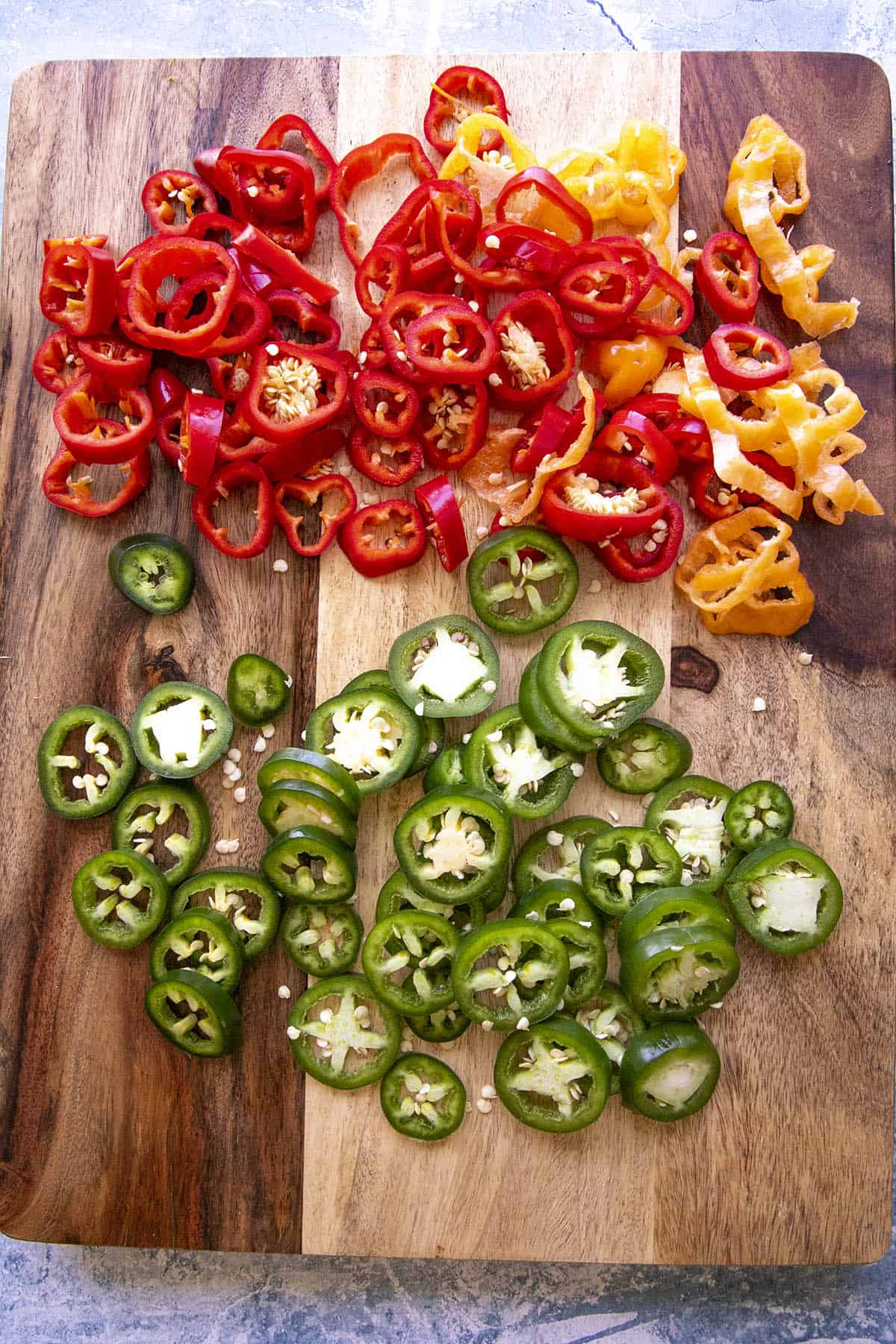
Next, add vinegar, water, sugar, salt, basil and bay leaves to a large pot. Bring to a boil.
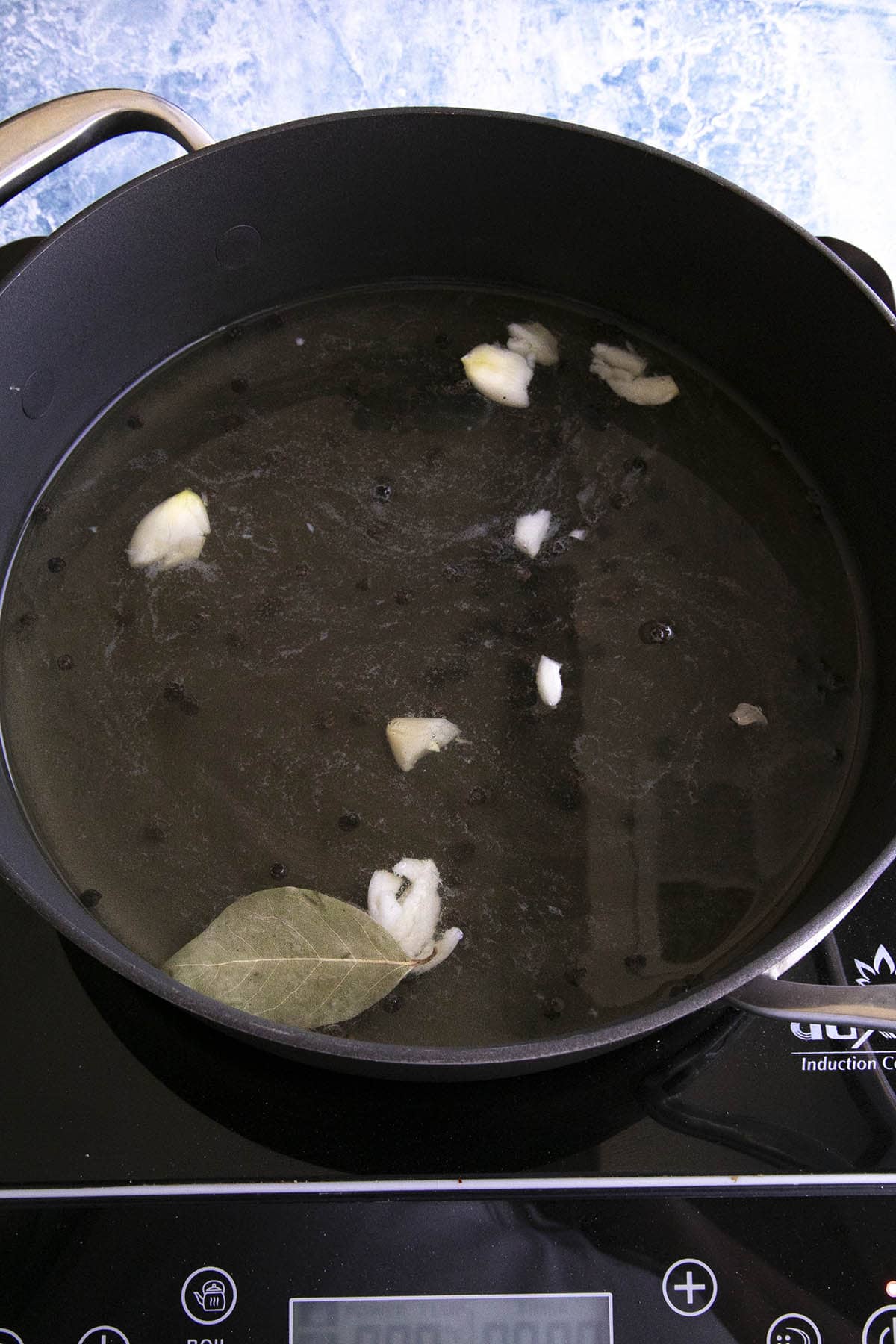
Reduce heat to simmer. Add chili peppers, then remove from heat. Allow to cool.
Last, pour into quart containers and seal. Be sure the peppers are covered by the brine solution. Refrigerate.
Best Vinegar for Pickling Peppers
For pickling peppers, use high grade white distilled vinegar or cider vinegar of 5 percent acidity. White vinegar is better to retain the color of your peppers. If the flavor is too acidic for your tastes, you can offset it with the addition of sugar or honey without affecting the pH.
Note that the acidity is important for pickling safety to prevent the growth of botulinum bacteria.
Best Salt for Pickling Peppers
It is best to use noniodized canning or pickling salt for pickling chili peppers. Table salt often includes non-caking ingredients that can make the pickling brine cloudy and unpalatable. Use salt labeled “canning” or “pickling” salt, or use pure sea salt without any additives.
Best Water for Pickling Peppers
Purified water is ideal for pickling peppers, though most water is suitable for pickling. Hard water may rob the peppers of their color, so it is best to be avoided.
It's All About the Acidity - and Ratios
Acidity is key for pickling. You want a pH of 4.6 or below for home pickling and pickles that will be preserved with the water bath method. Above 4.6 and botulism can form. A general rule of thumb with pickling is to use a minimum 50/50 ratio of 5% vinegar to water. So that is, 50% of 5% acid vinegar / 50% water.
You can increase the amount of vinegar to achieve a lower acidity and also more of that puckery pickled flavor, but never increase the amount of water in the percentage, or you can result in a pH above 4.6 where botulism can form.
Get yourself a good pH meter to measure your pickling brine. I recommend Thermoworks. I am one of their affiliates.
A Note About Pickling Spices
You have many, many flavoring options for pickling your peppers. Typically, pickling spices are used whole or coarsely chopped, and include any combination of some of the following spices:
- All Spice
- Bay Leaves
- Cardamom
- Cinnamon Sticks
- Cloves
- Coriander Seeds
- Garlic
- Ginger
- Mustard Seeds
- Peppercorns
- Dill Seeds
- Red Pepper Flakes
This is not an exhaustive list. Feel free to use whatever spices you'd like to flavor your pickled peppers.
See this page for more info: Pickling Spice for Pickled Chili Peppers.
Jarring or Canning Your Pickled Peppers
The above method is for easy pickled peppers that are kept in the refrigerator. If you'd prefer to process them in jars for longer storage, follow these procedures:
- Once your peppers are cleaned and prepared, fill your large pot with water and wait until it gets to a rolling boil.
- Prep your canning pot by installing the rack and filling it with about 4 inches of hot water from the tap. (Obviously, if the directions for your particular canner are different, follow those.)
- Put it on the stove top and fire up the heat to low. For the moment, leave the lid off. In the event that you are using a regular large pot in lieu of one that is specifically meant for canning, it’s fine if there is no rack for the cans, but it will make it easier if there is one, simply for handling purposes. You’re ready to can.
- Make more room on the stove top for your smaller saucepan. Here, combine the vinegar, water, canning/pickling salt, and sugar. Let the mixture simmer for 10 minutes.
- Fill your jars with peppers, but be sure to leave 1 inch between the top of the jar and the lid. This is called “head space,” and will allow the contents to expand during processing. Be sure to pack the jar as full as you can without infiltrating the head space.
- Once your jar is full of peppers, use a ladle and the funnel to fill your jar with the vinegar solution you created earlier. Be sure to leave ½ inch of space between the vinegar solution and the top of the jar. The pickling solution should always come to the top of the peppers in the jar, just covering them.
- For pickles, the USDA standard is ½ inch head space between the liquid and the top of the jar. If you leave too much head space, there will be too much air for a strong vacuum to form during the process, causing the jar to seal improperly or fail.
- When jars are full, place lids on jars and screw on – but not as tightly as you can. Make sure it’s snug, but you don’t have to power jerk the lids on.
- Arrange the jars in your canning pot – make sure there is at least 1 inch of space between each jar and its neighbor. Once jars are arranged, fill the canning pot using a ladle until the water reaches 1 inch over the tops of the jars. Use the boiling water in your other pot to fill the canning pot, but be careful not to pour boiling water on the tops of the jars.
- Pour the water between the jars until they are submerged.
- Once a rolling boil is reached within the canning pot, set a timer for 10 minutes, if your kitchen is 1,000 feet or fewer above sea level. For those 1,000 through 6,000 feet above, boil your peppers for 15 minutes, and if you are above 6,000 feet, boil for 20.
- Remove jars from the canner (using tongs: they’re hot) and allow to dry on a towel or cutting board. Make sure that they won’t be disturbed by sudden drafts or something bumping into them.
- After they cool, you can check the validity of the seal by pressing the top of the jar: if the top is sucked in, the jar is sealed. If it pops up and down, the jar is not sealed and you’ll need to start over (from the beginning: do NOT reprocess jars that were not sealed by initial canning. Remember, safe is much better than sorry).
- Remove the rings and wash the jars thoroughly. Store jars in a cool, dry place without the rings. Label with contents and date.
Congratulations! You now have pickled peppers.
Note that the above recipe is a basic pickling recipe and that you can include many other spices to achieve new and tasty pickled pepper flavors.
The National Center for Home Food Preservation provides home canning instructions and many recipes that have been tested for food safety. NCHFP.uga.edu.
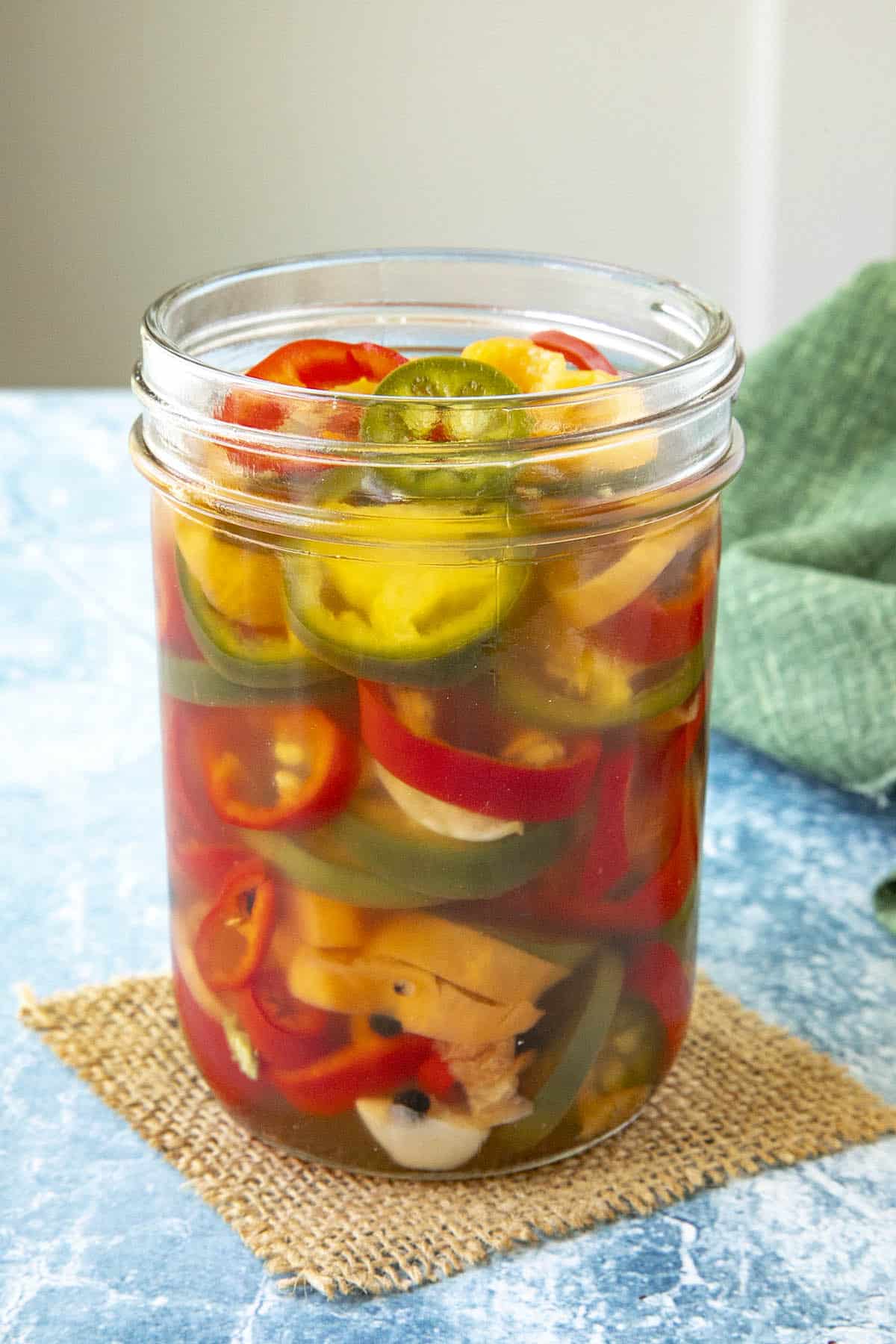
How Long Do Pickled Peppers Last?
This will last you several weeks in the refrigerator or longer. I recommend letting them sit a week or 2 before eating so they can be properly pickled. Enjoy!
This may seem like a lot of peppers, but if you have a decent sized garden like we do, you’ll achieve a yield like this regularly, so it is good to have a few different ways to preserve your chili peppers.
You can also process your pickled peppers in sterilized jars to keep them for much longer, as described above. This way they will last many, many months if kept stored in a cool, dry place.
Check out this Refrigerator Pickled Pepper Recipe.
Caution and Spoilage Prevention
The acidity level in your pickled peppers is important not only for taste and texture, but for safety as well. You should not alter vinegar, food, or water proportions in a pickling recipe or use vinegar with unknown acidity.
There must be a minimum, uniform level of acid throughout the mixed product to prevent the growth of botulinum bacteria.
Processing your pickled chili peppers in a boiling water canner will prevent spoilage from microorganisms (particularly molds and yeasts) as well as enzymes that may affect color, flavor, and pepper texture.
Standard canning jars and self-sealing lids are recommended. Store your pickled peppers in a cool, dry place.
What Can I Do With My Pickled Peppers?
Use pickled peppers to add some zip and zing to any number of foods. Add them as a topping for nachos and tacos, pizza, burgers and hot dogs, sandwiches, so much more!
I enjoy them as a component to sandwiches. They add a nice crunch and spiciness. Try chopping them to make a quick relish. Swirl them into soups and stews for added flavor.
Try These Related Pickled Chili Pepper Recipes
- Refrigerator Pickled Peppers Recipe
- Pickled Chili Peppers - A Recipe
- Pickled Jalapenos
- Taqueria-Style Pickled Jalapenos and Carrots
- Chile-Cucumber Chow Chow
- Sweet Chili Pepper Relish
- Hot Pepper Relish
- Green Tomato Relish
- Refrigerator Pickles (Hot Pickles)
- Pickling Spice for Pickled Chili Peppers
- Cajun Pickled Peppers
- Pickled Red Onions
- Indian Chilli Pickle
Additional Resources for Preserving Chili Peppers
Recommended Products to Help Your Pepper Pickling
These are all affiliate links, my friends. I earn a small commission from your clicks. FYI!
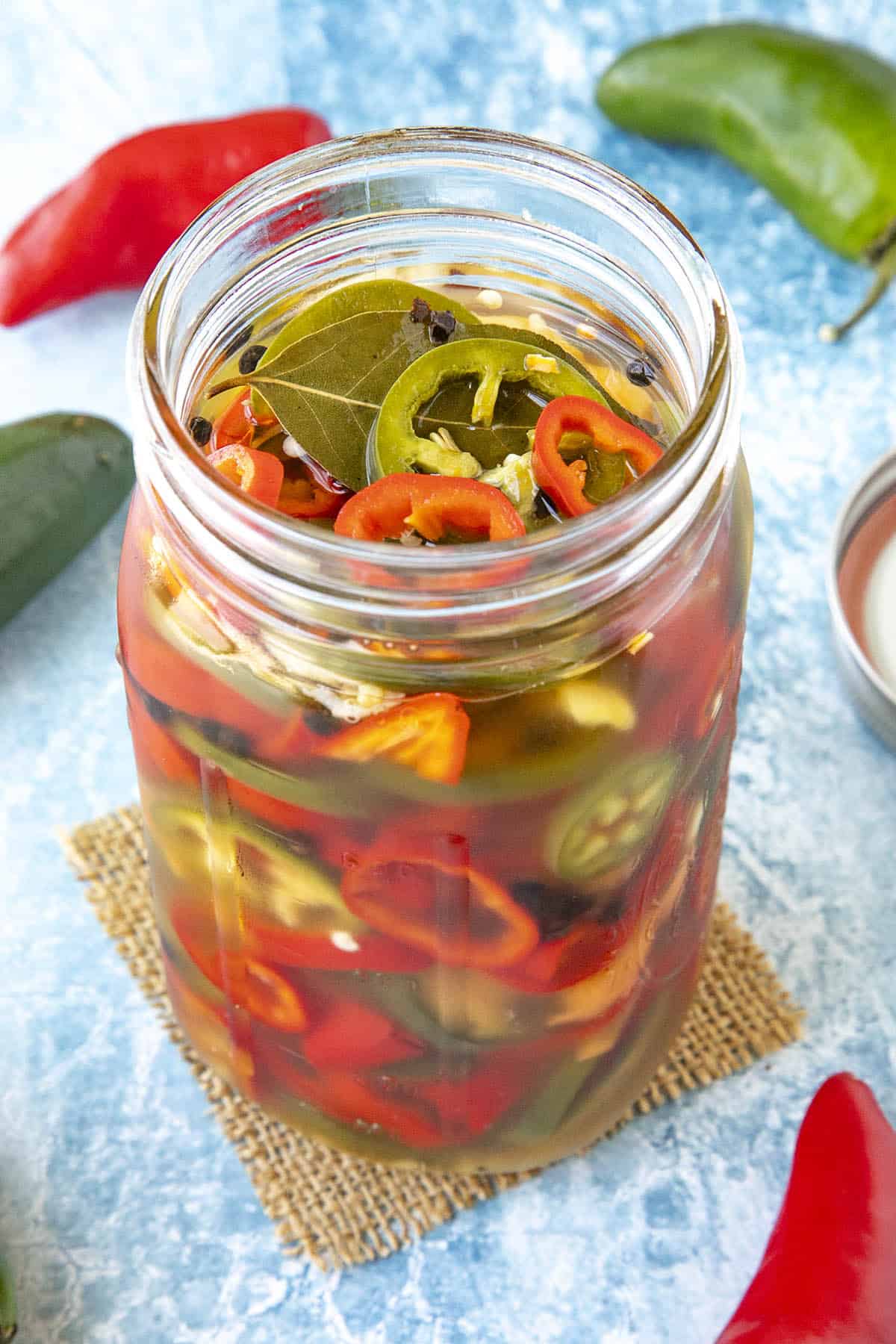
If you enjoy this information, please share it on social media. Don't forget to tag us at #ChiliPepperMadness. I'll be sure to share! Thanks! -- Mike H.

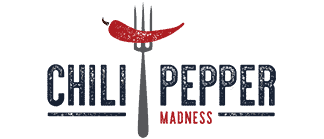

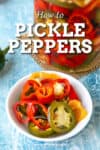
KAREN TRICE says
What’s the best way to use fresh hatch chilies?
Mike Hultquist says
For pickling, Karen? Treat them as any other pepper, really. Though you can roast and pickle them if you'd like. Not sure if this answers your question.
Cathy says
Not sure if I’m reading this wrong. You said 50/50 ratio of vinegar to water but your recipe is 4:1 vinegar to water.
Mike H. says
Cathy, a general rule of thumb for pickling is to use at least a 50/50 ratio of 5% acidity vinegar to water, meaning 50% of 5% vinegar and 50% of water. Let me know if it makes sense.
TJR says
Can I use any of the spices on your list of spices to leave in the jars to water bath can them to make a shelf stable pickled peppers recipe.
Mike Hultquist says
Yes, you can use the spices listed when canning.
TJR says
Thank you for your quick response. Last year I made a batch of your pickled jalapenos recipe using peppercorn, garlic, and bay leaves then water bath canned them. I ate them all within 8 months, later I was told it was not safe to use garlic when water bath canning. I just wanted to make sure because I'm fixing to make another batch (probably two so I can gift out).
Mike Hultquist says
Absolutely, glad to help.
Faith says
All of this sounds good. I used to do a lot of canning: relishes, jams, chutneys, bread and butter pickles. However, in my old age I have health issues that require that I reduce salt and sugar. Can I make some adjustments in salt and sugar in this recipe and still maintain safety? I can research it elsewhere, but I wondered if you had some thought. Love your site, BTW.
Mike Hultquist says
Faith, you can definitely skip the sugar. You can use a 2% salt brine for pickling, or even less most likely. For a 2% salt brine, use 18.92 grams salt (or .66 ounces). You CAN do a straight vinegar pickle without salt, but can temper the flavor with other herbs, spices, etc.